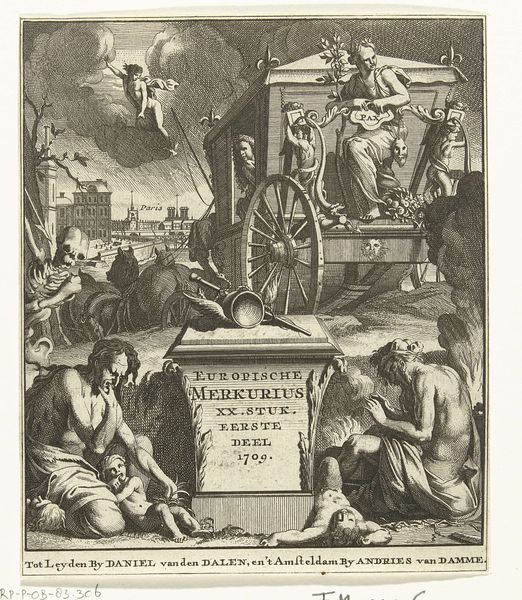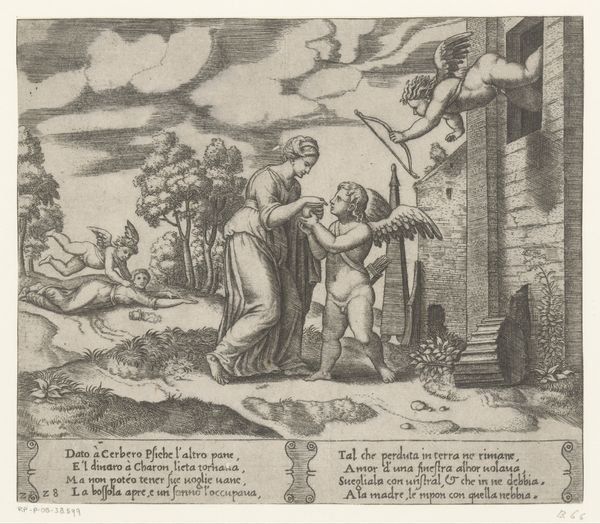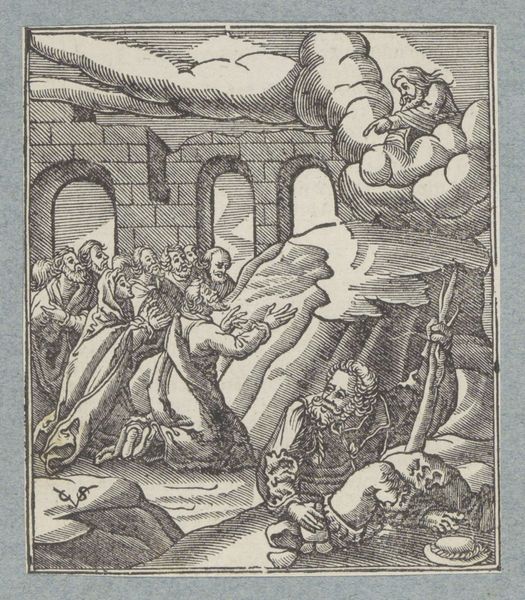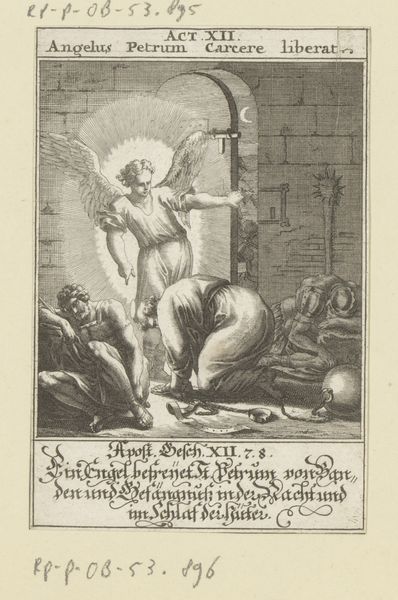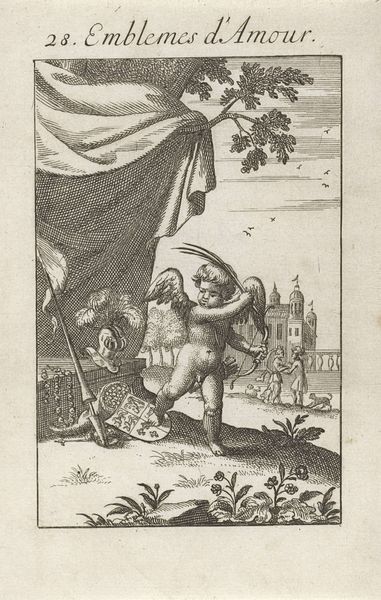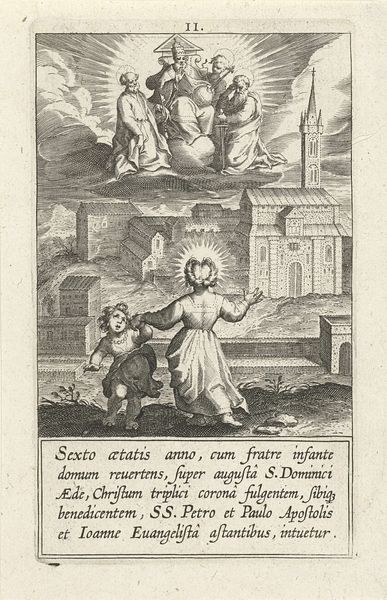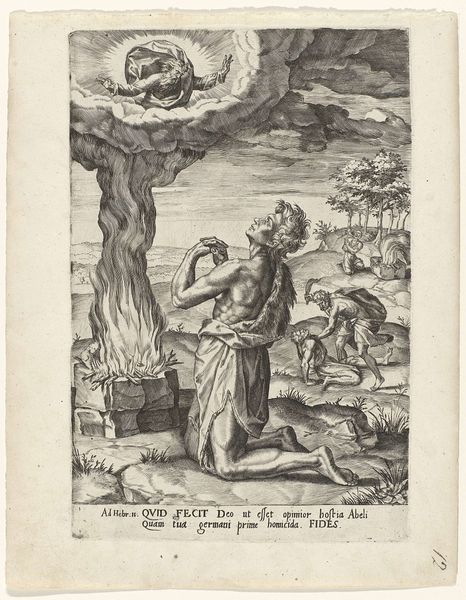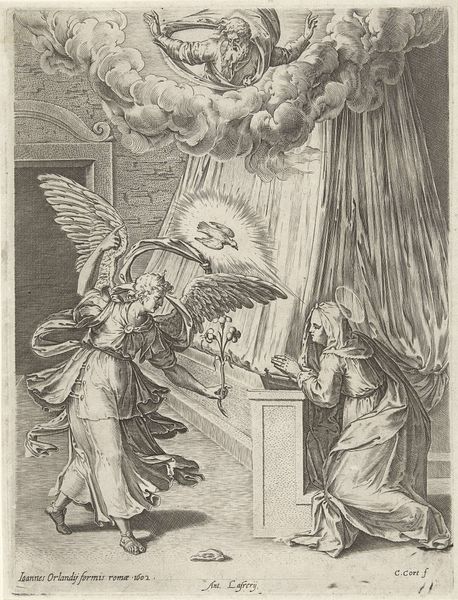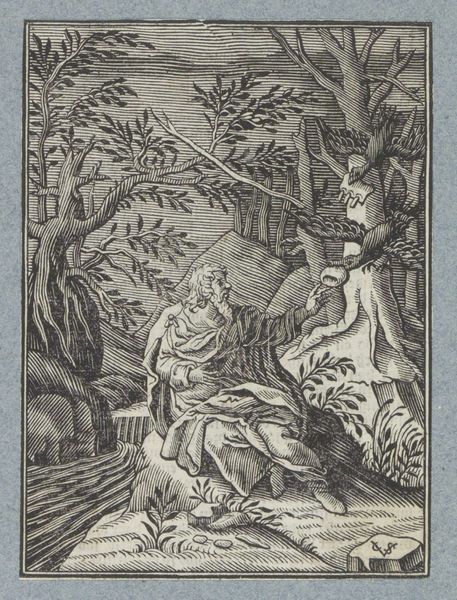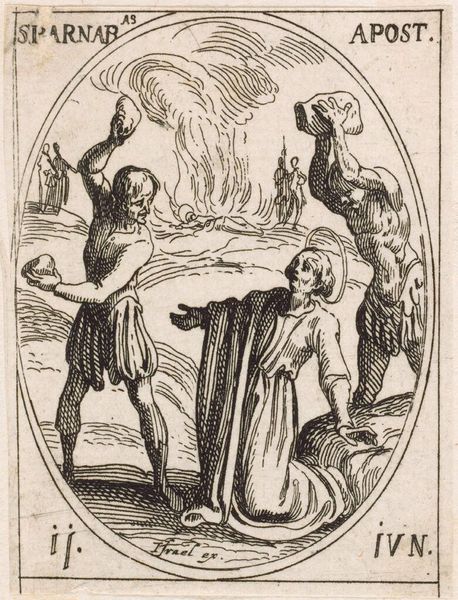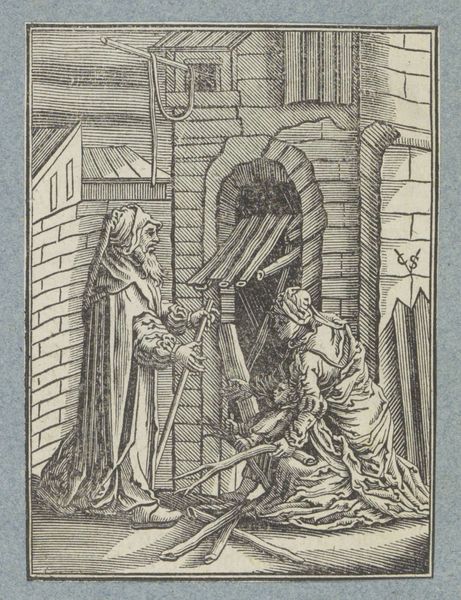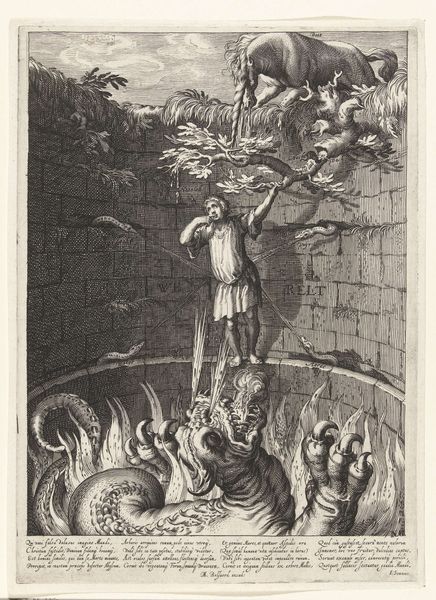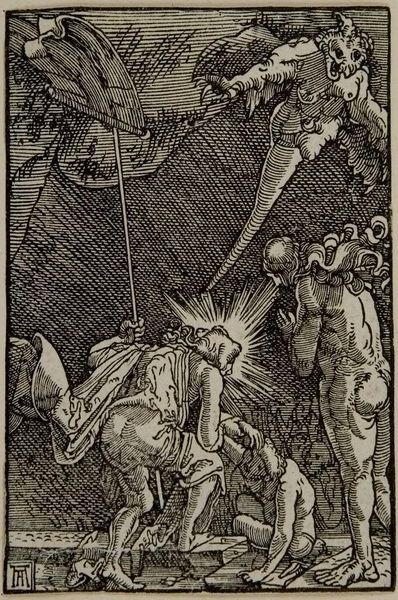
print, engraving
#
narrative-art
#
baroque
# print
#
figuration
#
history-painting
#
engraving
Dimensions: height 150 mm, width 90 mm
Copyright: Rijks Museum: Open Domain
Curator: Let's consider this engraving from 1603. It is titled "Catharina Has a Vision of a Crucifix" by Cornelis Galle I and can be found at the Rijksmuseum. Editor: It has such a dramatic visual economy, a true baroque composition. There's the sharp contrast between the illuminated crucifix and the shadowy demons. What exactly are we witnessing here? Curator: We are viewing a moment of divine intervention in the life of Saint Catherine, she's overcome with her piety, seemingly fighting the temptation, the 'demonium turba' with nothing more than the symbol of her faith. It's really history painting presented with an air of narrative theatre. Editor: Right, look at how she’s positioned, her posture and positioning of limbs suggest submission, yet her arms reach toward the light. It speaks to internal struggle, maybe of reconciling patriarchal demands, represented by the divine figure, with female autonomy. Curator: Indeed, consider also the formal balance. Galle masterfully employs contrasting light and shadow to enhance the drama, drawing our eye immediately to Christ and Catharina in tandem, despite the horde of demons, this axis is the primary focal point. Editor: While this emphasis might reflect some spiritual battle, I also observe the more physical oppression here. Catherine is bound by what the description identifies as chains. This piece reveals how female agency in the early modern era had to navigate religious piety and cultural control, and even more particularly that religious visions of female Saints had a fraught relationship with what constitutes female selfhood in our current terms. Curator: You're inviting us to ponder what visual conventions might enable these ideological contradictions... That the artist used engraving adds another layer, the precise lines further reinforcing order and spiritual authority even as the theme depicts internal conflict. Editor: I see now how both the religious imagery and formal composition can simultaneously suggest oppression and agency within a complex sociopolitical dynamic.
Comments
No comments
Be the first to comment and join the conversation on the ultimate creative platform.
